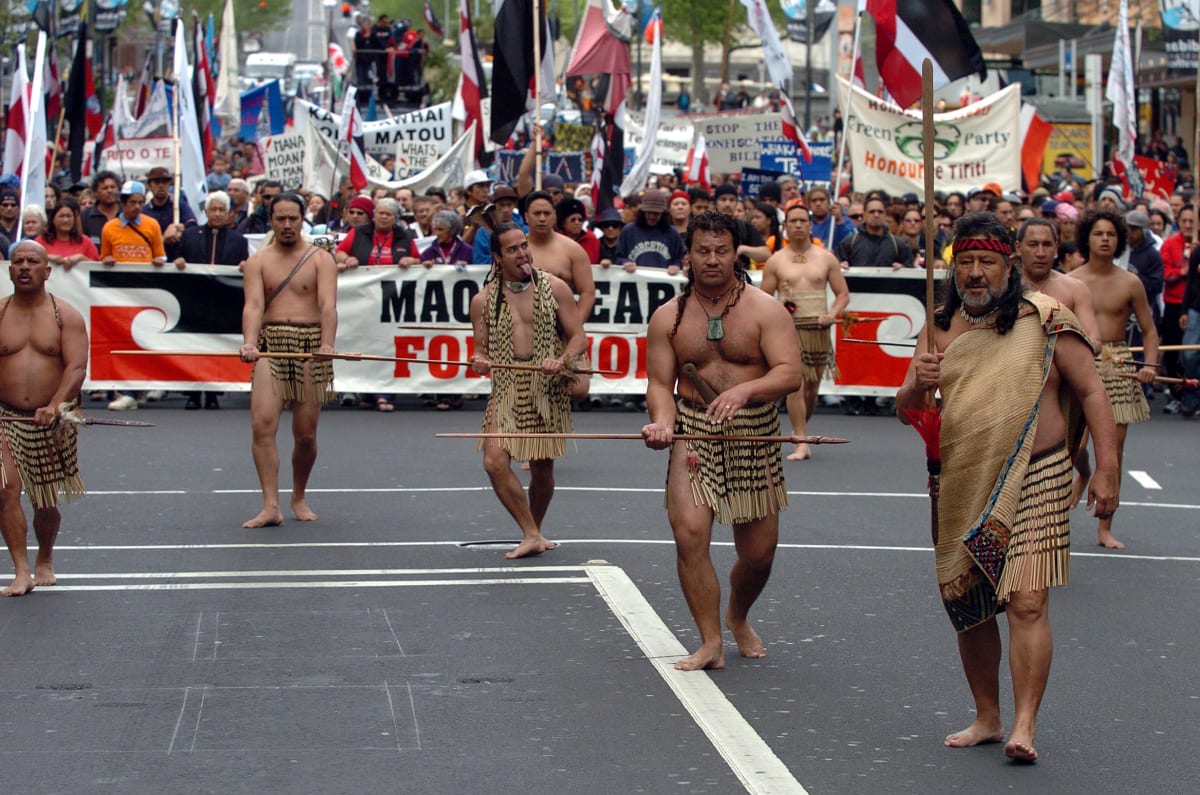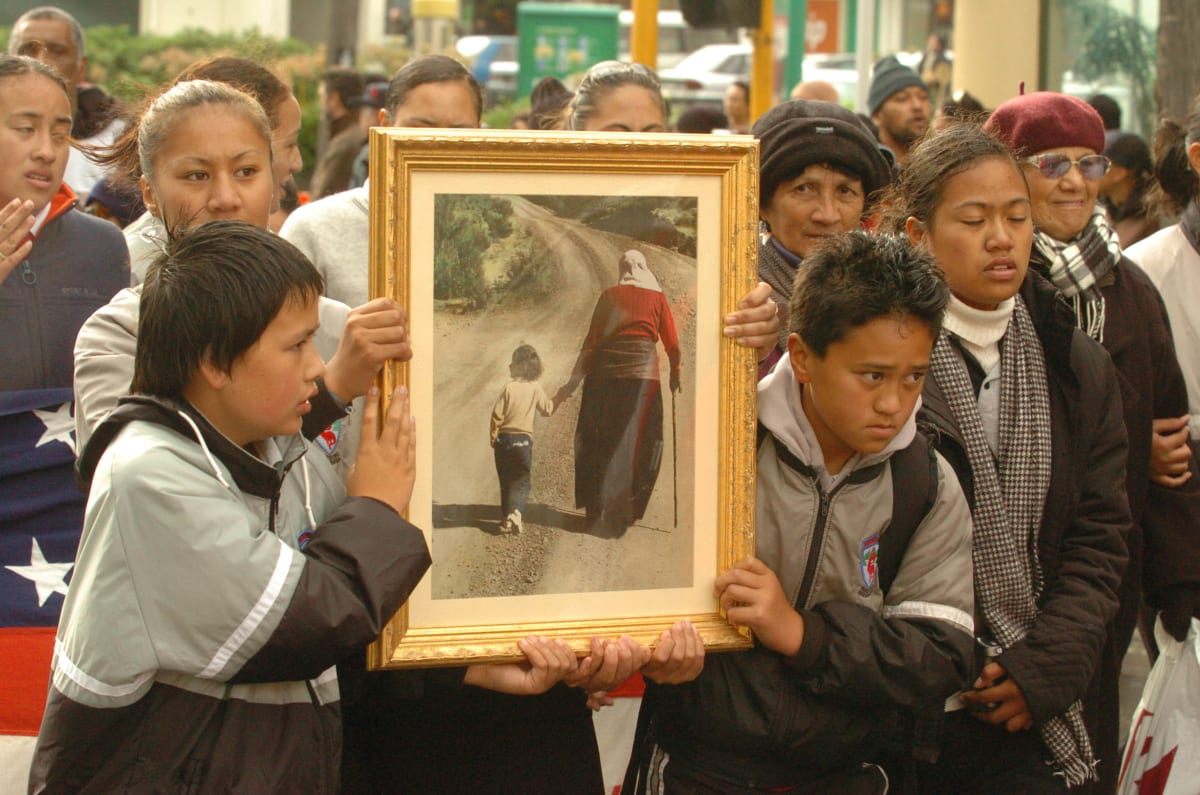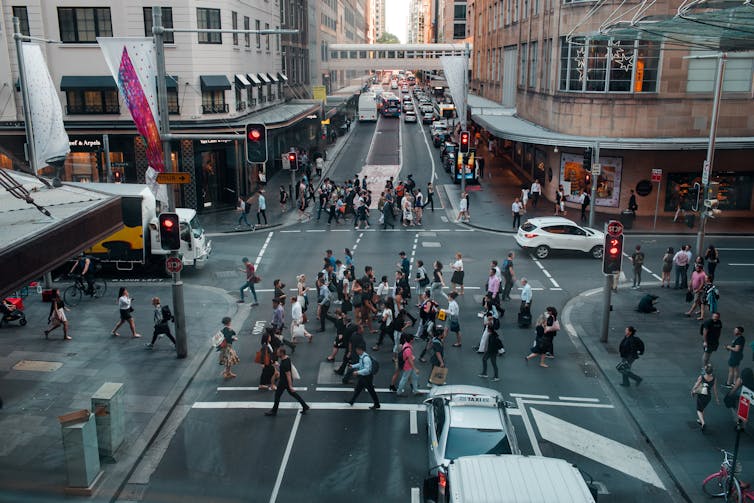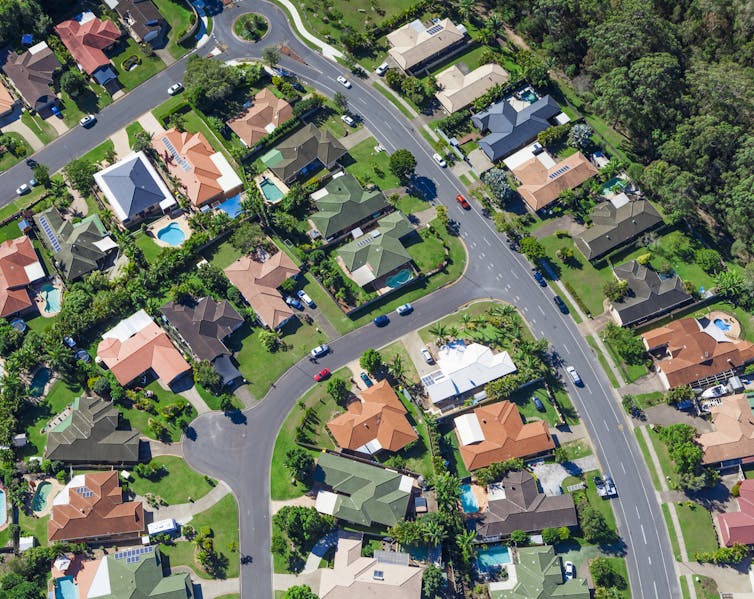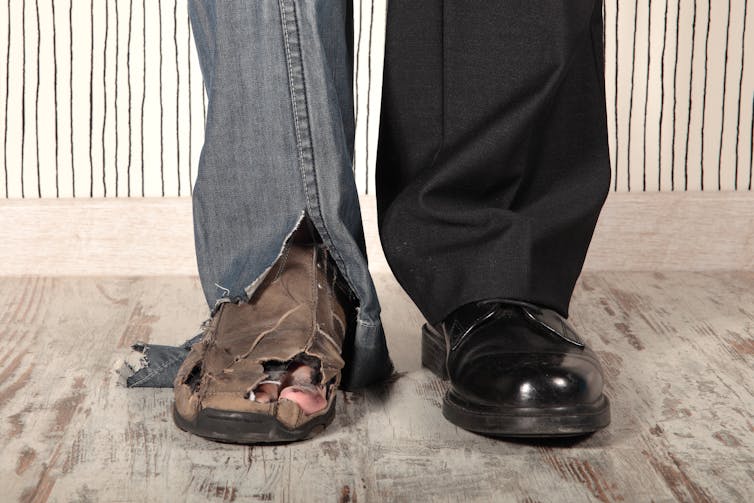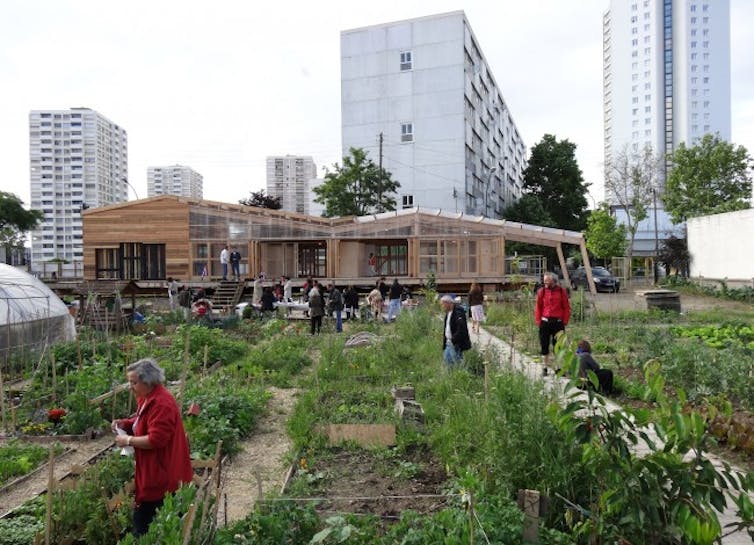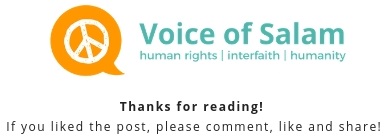 The legacy of a society is, well, how it treats its young, old, frail, infirm, sick, poor and those hobbled by structural and environmental injustice.
The legacy of a society is, well, how it treats its young, old, frail, infirm, sick, poor and those hobbled by structural and environmental injustice.
Some in urban planning circles also allude to how safe a community is based on the popsicle test – can a child or two walking from home to a store, get a popsicle without having to cross high speed roads or highways, without having to walk along long stretches of ugly dangerous buildings, and who can find a multitude of stores that sell good food and desserts like Popsicles. How easy it is for the child to walk there? Are the homes-apartments-duplexes-offices looking out toward the sidewalks? Are there porches out front where people linger and lounge? Are there trees for shade? Are there mail boxes? Are there stores and eateries on the ground floor of a stretch of businesses with apartments and housing one and two floors above? Are there people bicycling? Are the stores and businesses set toward the streets and their parking lots pushed to the back of the establishments? Are there scalable hardware stores with windows and many doorways? Are there neighborhood groups that patrol the neighborhoods? Are there mixed neighborhoods with lower economic mixed in with middle class? What are the officers of the peace doing? Are they walking and bicycling their beats, where they live? Are they battened down in huge bulletproof SUV’s with three computers, five assault weapons, and the A/C blaring?
The children, walk or bicycle from their home, and within a few minutes, they get to a place of business, without running through or dodging a gauntlet of racing trucks and autos. Are there elderly and families and business owners and customers there, doing their thing, on a scalable level?
We know that in capitalism, in this free (sic) market society, with the bottom dollar and the bottom line of more and more profits without work or building something as the drivers, we the people – those two children walking to get a fudge bar or organic apple – are not the drivers of the society, the communities, the neighborhoods.
Life in Capitalism is designed for speed, rot, decay, throwaway buildings and throwaway humanity. We have those massive systems of oppression run by real estate, insurance, finance, banks, building and paving, all those entities guarded by the US Chamber of Commerce whose job is to maximize the profits (gouging’s) of the large and medium-sized businesses that have run rough shod over us, the “regular people.”
Now, those old industries are being retrofitted for the next level of exploitation and enslavement vis-à-vis the economies of scale vaunted by the monopolies, the investor class and billionaires. And that scaling up is facilitated by the masters of logarithms and Artificial Intelligence and digital dictators.
Mom and pops – that is, the small family-owned businesses and the mini-chains of this or that service or consumer item – they are now on the cutting block in an amped up destruction of people’s lives, on a scale that would make a steroid using wrestler look like Mother Teresa on bread and water. Any chance of having a small business community have a say in how their communities and neighborhoods and census tracks are developed alongside with how their neighboring communities connect to this urban and rural planning, all of that inclusive and participatory democracy and governance are dwindling ten-fold yearly.
Who makes the decisions? Who puts the brakes on suburban sprawl and rampant car-centric cities? Ahh, the masters of money and masters of stocks and the AI and Digital Dictators will have more and more say in the design (or miss-design) of both the built environment as well as the financial environments. Add to that educational environments, the healthcare environments, the food system environments, the housing environments. We the people do not have control!
Examples by Design
I’m putting in this opening above to help segue into the reality of my work now – one of many hats, but now, it’s social work and case management for adults living with developmental and intellectual disabilities. And some who have had traumatic brain injuries.
If the reader doesn’t have a bead on what the ID/DD community is, well, look it up. In a Western culture with more and more pre-newborns gestating into a slurry of forever chemicals, cortisol loads, heavy metals, stress hormones from mother, and a combination of all of this as a synergetic roulette wheel, coupled with DNA markers from mother and father, well, you can image that young boys and girls with disabilities like Autism Spectrum Disorder or mental retardation or any number of other aspects of life dealt from a genetic and poison deck of cards will be a huge burden on families, medical services, schools, society in general.
Go back to the Popsicle analogy, but this time look at how our cultures deal with the less fortunate – a child born is innocent, no matter what sort of spirituality or religiosity you hold or do not hold. Cases in point for me after more than two decades working with poisoned souls – the children of the storms: fetal alcohol-affected or drug-addicted or hugely malnourished inside the womb – we are barbaric in terms of how we “deal” with the afflicted or the people born into a life of one or multiple deficits.
Here, a composite – Drew was born to a mother who “experienced” drug and alcohol addiction. He was 5 pounds and four ounces at birth. He tested positive for cocaine and opiates at birth. He was in a nursery until moved to foster care in 10 days. His birth mother had several children “taken away or removed from her” because of her addictions.
He was adopted by an old woman, who loved him but died of cancer when Drew was 7. Neighbors reported to the child protective agencies in California that Drew was being neglected and the dying mother was not caring for him properly.
This is a common story in my line of work – multiple foster home placements per individual, lots of behavior issues arising by first year of school, from aggression, to defiance, to tantrums. Quickly he was put under a special education label – independent education plan. His ADHD, Tourette’s Syndrome, and anxiety, depression, aggression, isolating behavior, and poor stick-to-it-ness, all of that and more channeled him into special classes and into the special education network. Hearing voices and magical thinking and fantastical thoughts and paranoia, well, Drew is sort of a ward of the state. His foster/adoptive parents are his financial guardians, and he has county case workers and state ones lined up, along with nonprofit case workers.
I work with a nonprofit, again, as a case worker-employment specialist. My job is to get people like Drew jobs, but that process is holistic, systematic and definitely tied to the whole suite of getting young and not so old people ready to face competitive employment, integrated, no longer stuck in some sheltered workshop.
Those “sheltered workshops” included Goodwill clothing tagging rooms where all workers were those living with developmental disabilities; or even roaming crews of cleaners of office buildings who are all labeled ID-DD. That is a type of cloistering, sheltering from mainstream society.
My nonprofit, of course, is a middleman of sorts, replacing the services states, counties and cities should be providing by taking over the contracts to do the work of providing developmental disabilities safety nets.
Nutshells are the Only Teachable Moments
So, getting someone a job at a hotel to do towel folding or room cleaning, or helping someone land a job as a custodian at a school, and for those with more skills and with more confidence, a place in retail sales, that’s part of my work. Sure, in Portland I worked with lawyers who have cerebral palsy, and true, that type of person deserves an equal shot at being a lawyer or working at the level somewhere. These advocates have their hearts in the right place, to be sure, and no Five F’s for them – filth, factory, food, foliage, fur – because they have graduate degrees.
The reality is, though, someone with a lack of reading skills, with Autism Spectrum Disorder, and all the attending issues tied to the autism in that individual, well, working a cash register is tough (impossible for most), and doing public customer service at any level is tough. Behind the scenes jobs are the norm, and, unfortunately, the filth, food, foliage, fur and factory are the only choices sometimes. Life on the Central Oregon Coast where people retire or vacation, and where a fishing industry thrives, well, those job opportunities dwindle big time.
Aspirational: all people deserve home, health, education, food, work, public transportation choices. Aspirational: sure, we need communities designed for that Popsicle test. Most of my clients, of course, do not drive, or can’t. Most clients have issues with navigating the absurd on-line employment applications. Many clients need me there in the actual job interview.
Many clients need a coach on the job, sometimes for life. Many clients work minimum wage for 20 hours a week to keep a bit of the SSI (social security insurance coming in). We are such a penury and usury society that my clients, even at minimum wage, get a dollar taken away from every two dollars made. This is how the system kills hope, advancement — the state gobbles up shekels after their first $85 is earned.
All the studies and anecdotal evidence show that a job for a person with a developmental disability or a physical disability, or even a psychological disability like schizophrenia, THRIVE with employment for obvious reasons: a sense of belonging, team work, doing something as a member of society, extra money, socialization, using the brain. But here we are again, failing the other Popsicle test – we penalize and penalize and penalize until people are stripped bare.
A few clients have to take urine tests for many jobs, and if they come back positive for cannabis, well, some outfits disqualify the person automatically from a minimum wage job. Even if that person has a medical marijuana card, in a state where pot is legal (it is in OR). Imagine that, all those politicians, those weak-spine things in DC and around state Capitols, and this is what they have legislated and this is how weak they are when it comes to day to day, people to people life-and-death decisions.
Study after study, and again, a million anectodical stories show THC and CBD actually pull patients off prescriptions and actually keep anxiety at bay and amp up focus.
The law enforcers and the bureaucracies and the policymakers are Neanderthals, really (no attack on those people, Neanderthals, but it’s a term of describing how behind the times and backward they are).
My job is to do workarounds, to do magic, and while mom and pop’s along the coast are shuttering daily, the small hotels are now owned by investment groups, and managed by the big daddies of hotel and motel management corporations. Having workarounds with national organizations, sometimes multinationals, well, those conversations never happen, let alone an email gets returned. They are not of, for and by the community. They are in business for the investors and profits.
The chances of having an offspring with one or a number of chronic illnesses or who might end up on the spectrum or might have brain anomalies because of gestational issues, or who are genetically programmed to come out a “certain way,” well, those odds increase monthly.
Yet the systems of oppression and the cops and the legal systems, they still incarcerate, batter and murder people with autism. People in mental health crises are tased and murdered by pigs. The systems of oppression are buttressed by the prejudices of Holly-dirt and the bullies of the world. It can be an overt Trump making fun of a disabled reporter at a press conference when he was first running in 2016, or it could be a Biden who pushed the crime bill, putting untold numbers of people with mental, emotional and situational abuse in chambers of hell – prison.
The spectrum of people who still do not understand why I work in “that field,” under all the pressures of emotionally traumatized and psychologically depleted people and their families, well, they might think of themselves as the beautiful people, the anti-Trumpistas, the LGBTQ folk, the African-American-in-the-VP-office loving folk, but again, they fail the Popsicle test.
Dream hoarders and Not in My Backyard vacillators, and all sorts of other liberal/neoliberal types, they are no friends of the Popsicle Test of a Sustainable, Fair, Resilient Community. They love their first and second homes. They covet a Stock Market hovering around 31,000 points. They love the Netflix mental diabetes junk they consume, and they have no idea why Biden is as bad as Bush or Trump.
And then I have to convince people to shed their prejudices against people that are not appearing “like themselves.” We do not use terms like “neuronormal” to contrast my clients with the mainstream, but in the end, what is normal in a society that shifts baselines almost weekly?
With the new normal full of paranoia, unapproved vaccines, and misleading diseased minds like Fauci and Gates leading the charge for a global forced vaccination program, one can image how paranoid my clients are who live in group homes or in small one-room apartments. TV and few friends ramify their fears. Lockdown is a locking up of the mind!
Some clients do not even want to meet me face to face on a beach with masks on. They are paranoid because of the mass polluting media. One disability on top of another and another. Welcome to America.
What is a disability? I suppose Helen Keller might figure in here:
When she was sixteen, in 1896, she was catapulted to national fame, writes Keith Rosenthal for the International Socialist Review. By 1904, when she graduated from Radcliffe College, she was internationally famous. She joined the Socialist Party of America a few years later and began advocating for revolutionary change. “She noticed the close relationship between disability and poverty, and blamed capitalism and poor industrial conditions for both,” writes Sascha Cohen for Time.
But even though she had strong politics and a national voice, nobody took her opinions seriously. “Newspaper editors would use her disability as a means to dismiss her politics and to dissuade people from taking her seriously,” writes Rosenthal. “Her radicalism, conservative writers would aver, was a product of the political ‘mistakes [which] spring out of the manifest limitations of her development.’”
Despite this, she was a leading light of the American socialist movement, Rosenthal writes. Among many other causes, she championed pacifism and the U.S. staying out of World War I. Source: Smithsonian Magazine
/https://public-media.si-cdn.com/filer/80/1b/801b5790-de77-4f5a-be6f-c82dd073fbd5/keller.jpg)
Eventually, in dog-eat-dog, kill your competition capitalism, we all become each other’s competitor, enemy. A few billion dollars here and there for hundreds of millions of struggling people is birdseed, yet the systems of oppression and suppression, along with the mass murdering media, cull agency, gumption, and the ability of people to stand up to the oppressors and the authorities and multiple graduate degree certificate holders.
What do the people I serve and the so-called “normal majority” have in common? There are variations on a Dystopian theme, whether it’s Blade Runner or Minority Report or Brave New World or 1984. Almost everyone in this country is confused, shattered, see-hear-speak no evil tied to their specific coalitions and ways of thinking. My amazing clients are enmeshed in fear and the outside world, thanks to the conflation of SARS-CoV2 to a body-eating zombie virus, eating them alive and culling them all eventually. No more hide and seek — it’s all duck and cover and mask and hide and isolate.
What that gives me as a worker are many people who deserve integrated employment but who are hobbled and shackled to the gestalt of a warped society. Do they have other ways of thinking and seeing and hearing? Of course. Do they have their own methods of surviving paranoia, depression, anxiety, hypervigilance, magical thinking, shattered executive functions, functional or complete illiteracy?
Of course. Of course. But again, the Popsicle test fails each time. Imagine, a job, 4 pm to 8 pm, in a town 15 miles from where they live. Can you see the public transportation system beautiful and timely and regular? Nope. Can you see all these taxi and shuttle services for free getting people to work and from work who can’t-won’t-never will drive? Where is that dreamland in Capitalism?
Yet every minute and every second of a 24-hour news cycle or 24 hours of a million channels broadcasting thousands of novellas, soap operas or series and movies, all are occupied with the stories and travails of the rich and famous, the idiotic heroes or pig crime dramas or Marvel Comic Book drivel. Rarely do Americans see what they live out personally, or view what they struggle with daily, or get to watch people like themselves in this battle to get the oppressors and Eichmann’s to bend to their/our will and begin to apply the tenants of the Popsicle Theory.
Otto Zehm
I can end with story after story of humanity hog-tied or knee-butted to death by the cops. Add to that demographic people living with psychological-intellectual-developmental disabilities.
You do not have to surf the internet long to find a few cases of autistic men and women or boys and girls getting pepper sprayed and handcuffed and body slammed by the pigs.
There is that case of Otto Zehm, and then Alien Boy which I wrote about here at DV. “Watching Brian Lindstrom’s Alien Boy: The Life and Death of James Chasse, I am reminded of my forty plus years in and around cops, with mentally distressed clients, as a social worker with homeless and re-entry and veteran clients, and as a teacher in many alternative high school programs, community college, prisons, with military students, and with adults living with developmental disabilities.”
I think that most of us instinctively avoid people with mental illness.
I think in many ways what my films are about is that search for my grandpa’s dentures: for that humanizing narrative that bridges the gap between “us” and “them” to arrive at a “we.”
—Brian Lindstrom, documentarian

Zehm was 32 years old when the Spokane cops killed him by putting him on the ground and forcing a cop’s weight onto his back while Otto’s diaphragm collapsed. He was a custodian, and back in 2006, the Spokesman Review deemed him as a mentally disabled custodian.
He went into a mini-mart for soda. It took almost a decade to find the pig guilty of murder. And this is how the DA and cops think of “mentally disabled custodians” —
Zehm either “attacked” the officers or at least refused to comply with their commands. Police Chief Jim Nicks said Tuesday that Zehm “immediately engaged” the first officer.
“Whether he lunged or turned quickly on him, whatever the case may be, the officer clearly felt there was a risk there,” Nicks said. “The suspect had a large two-liter bottle of pop. The officer had to take all those things into consideration as far as what level of threat this might be.
“But the bottom line is they had a duty and an obligation to detain and control him.” — Spokesman Review
I’ve been down this road many times over the years. My first police encounter as a newspaper reporter was in Ajo, Arizona. A very long time ago. Pima County Sheriff responds to a mother’s call about her Vietnam War veteran son having a mental crisis out front in the desert front yard. Fenced in. He needed some meds. The cops show up. And, while the veteran was on his mother’s property, which essentially was being paid for through the vet’s job and benefits, the deputy pulled his gun on the other side of the property line. He tells the 38 year old to drop the small knife.
A knife brandished by a shirtless and barefoot fellow in his OWN front yard.
Justified-six-shots-to-the-torso homicide. I was 19, and back then, I had this gig as a newspaper reporter, the so-called “sexy” cop beat, and, while I pushed my editors to allow some of my secondary interviews into the piece (interviews I did from a USC criminal justice reforming professor, another from a police chief in Akron) well, those were cut from the published article. Those two sources discussed how police are ripe for this sort of homicide, and how the system is rigged to defend civilian killing cops. That was 43 years ago.
I spent time with the vet’s mother and his ex-wife, and in reality, this guy was pretty cool, a great rock hound, three years at the university in hard rock geology, but his PTSD was way too much. PTSD wasn’t even the terminology back then in 1976.
I think of Otto Zehm all the time now. I knew of him and said hello to him a few times while I lived and taught in Spokane. He cleaned at the Community Building where I did a lot of gigs as a poet and teacher. I had my radio show in that building, and I ran into Otto a lot.
There is no way in hell Otto could have done harm to a cop.
The irony is that in 2006 I wasn’t working yet directly in the field of developmental disabilities. Sure, I had students who had psychological disabilities, and some students with accommodations. Many students who came back from the killing mountains of the Middle East.
I ended up working with adults with developmental disabilities in Portland and the three-county area 8 years later.
Now I am back at it, and, I think about some of my very verbal and far-thinking men and women with autism disorders. I think of their defiance and their questioning and their inability “to get” that cops or pigs or sheriff deputies just are itching for a bruising. They expect instant compliance. That is compliance from a disabled person, or from a three star black general or a Mexican American female attorney.
You can read about the extrajudicial killings this country’s allows. And that, again, is the Popsicle Test failure Number 999,999.
All those promises for reform. With the Portland Police Bureau. Seattle PD. Spokane PD. A thousand other PD’s blemished overtly with police brutality, police coverups, police maleficence.
No Popsicles for the People. Including the Developmentally Disabled.
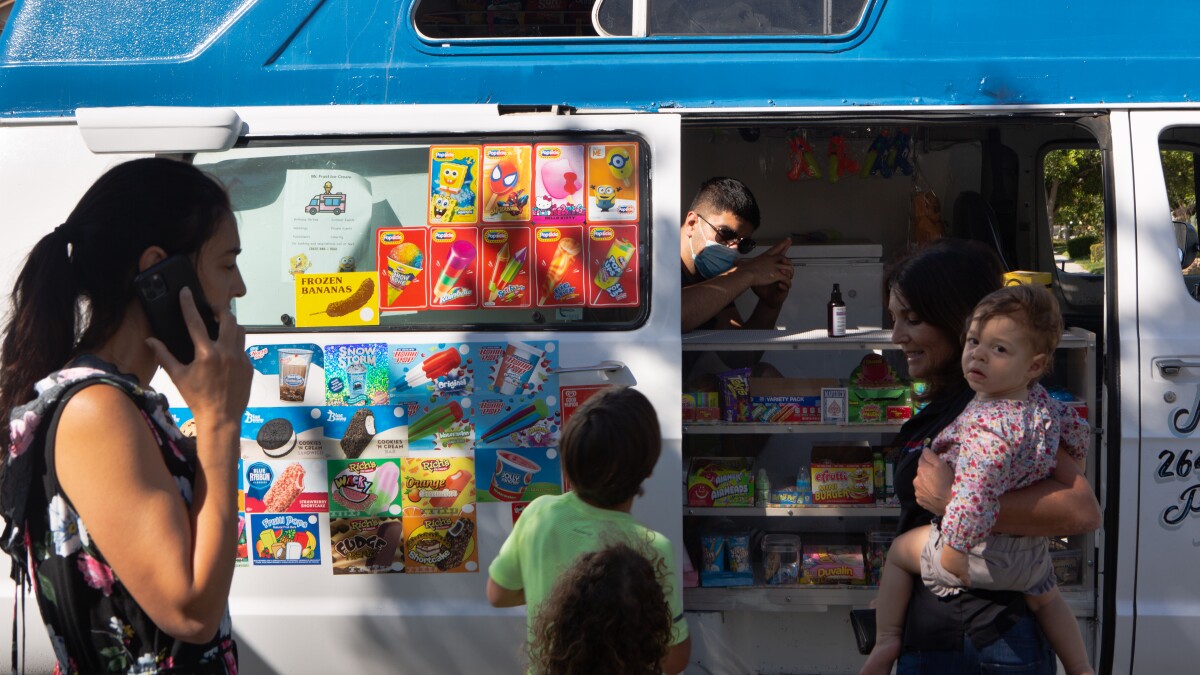
The post
Dreams Outside the Hopes of the Neuronormal first appeared on
Dissident Voice.
This post was originally published on Dissident Voice.
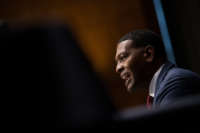
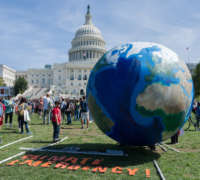

/https://public-media.si-cdn.com/filer/80/1b/801b5790-de77-4f5a-be6f-c82dd073fbd5/keller.jpg)


